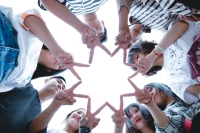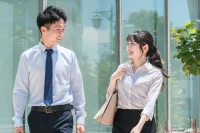Types of Kimono (Japanese Traditional Costume) - Explained by Gender
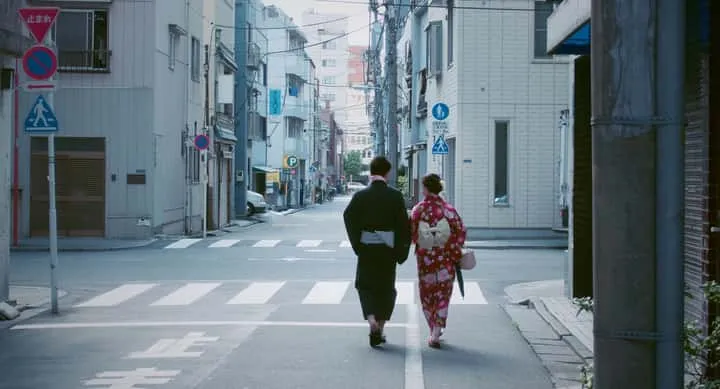
The kimono, a traditional Japanese costume, has many fans around the world. Although few people wear kimonos on a daily basis these days, they are still an important part of traditional culture for the Japanese people.
More and more tourists from overseas are experiencing the kimono during their stay in Japan. Kimonos worn by foreigners also give a fresh and beautiful impression that is different from the usual.
This article introduces the beautiful and profound world of kimonos for foreigners to enjoy.
▼Goandup Picks Click here for recommended articles!
- Required before studying abroad! Goandup Nihongo+, an online Japanese language learning service
- This page introduces services for foreigners who wish to study in Japan or improve their Japanese language skills to learn Japanese online.
- Goandup Salon" community for foreigners living in Japan
- We introduce an online community where foreigners living in Japan can exchange information and interact with each other to support their life in Japan.
- Goandup Study" supports foreigners who want to study in Japan.
- This section introduces study abroad support services that provide comprehensive support to foreigners who wish to study in Japan, from preparation for study abroad to living in Japan.
- Where can I buy a prepaid SIM in Japan? Recommended SIM cards for foreigners are also introduced.
- How to purchase a prepaid SIM and suitable SIM cards for foreigners.
- The Complete Guide to Pocket Wi-Fi in Japan for Foreigners!
- We introduce how to select and recommend pocket Wi-Fi products that can be used conveniently in Japan.
- The Complete Guide to Finding a Job in Japan! Finding a job, changing jobs, and part-time work for foreigners
- This site provides foreigners who want to work in Japan with comprehensive information on how to find a job, recommended job sites, and other information necessary to find a job.
Typical types of women's kimono
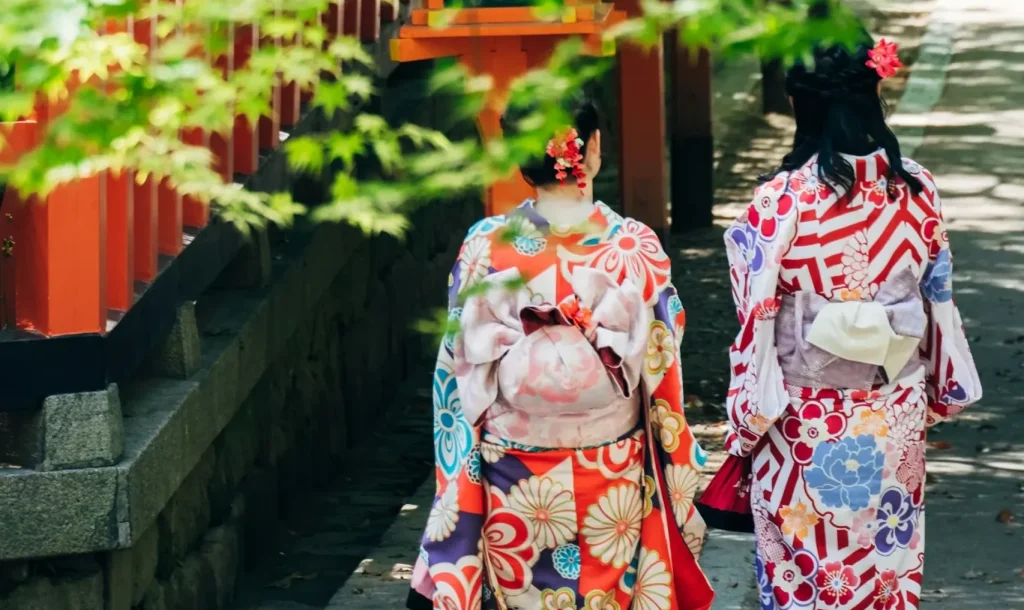
Let's start by looking at the typical types of women's kimono.
1. furisode
The furisode is considered the first formal dress for unmarried women. Characteristically, the lower part of the sleeve hangs long. You will know it is a furisode just by looking at it.
The colors and patterns are often vivid and gorgeous, enhancing the beauty of young women. These kimonos are often worn for coming-of-age ceremonies, weddings, and other special occasions.
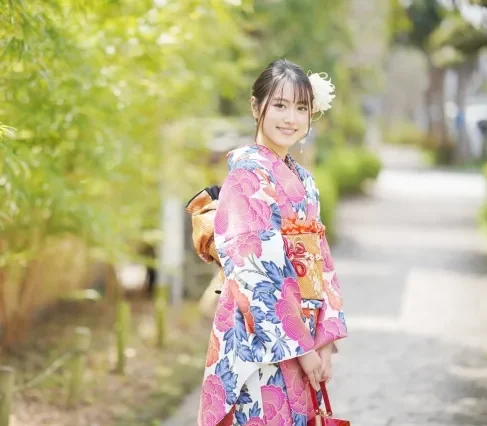
2. tomesode
On the other hand, tomesode is considered the most prestigious formal kimono for married women. It can be worn day or night.
There are two types of tomesode: black tomesode with patterns on a black background and colored tomesode with brightly colored patterns. Kuro-tomesode is worn at more formal occasions, such as weddings of relatives.
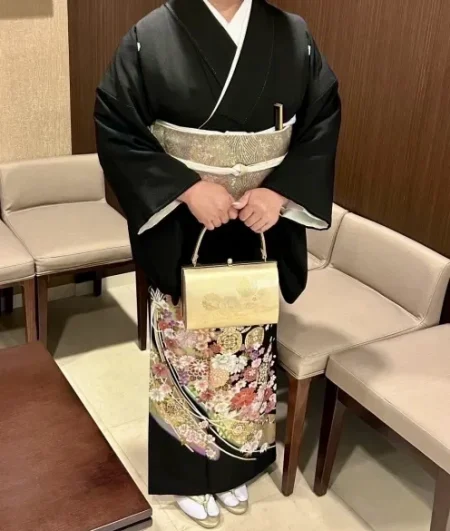
3. visiting gown (hoomongi)
The visiting gown is the second most prestigious formal wear for women after the tomesode. It can be worn by both unmarried and married women.
It is worn to attend weddings, tea ceremonies, parties, and other glamorous events outside the immediate family. Visiting kimono has patterns on the upper half of the body, including the shoulders and chest, while tomesode has patterns only at the hem, making it easy to distinguish them.
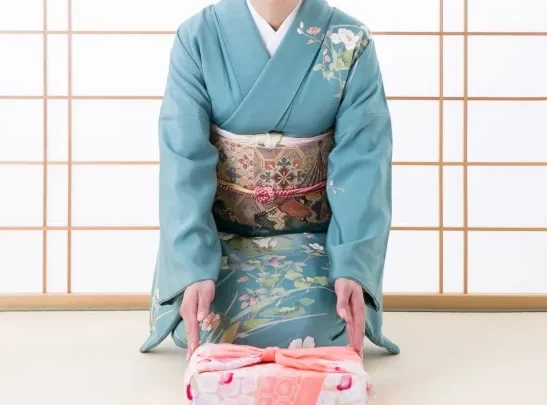
4. small pattern
Komon is characterized by fine patterns throughout the kimono. There is no rule for the direction of the pattern, and it can be either up or down.
Komon can be worn as everyday wear and is recommended for those who want to enjoy kimono in a casual manner. Although it has a strong image of casual wear, depending on the type of pattern, it can also be used for slightly more formal occasions.
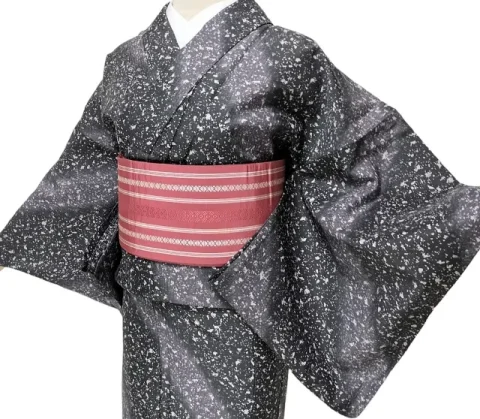
5. uchikake
Uchikake is one of the bridal costumes and is known as a typical wedding gown along with shiro-muku (white kimono).
While shimomuku is an elegant all-white design, uchikake is characterized by its vivid colors and gorgeous patterns. The bride wearing uchikake is exceptionally beautiful and is worthy of the once-in-a-lifetime appearance of the bride.

Men's Kimono
Next, let's look at the typical types of men's kimonos.
1. haori hakama with crest
The haori hakama with crest was the ceremonial dress of samurai during the Edo period (1603-1867), but today it is considered the first formal attire for men. It is commonly worn by the groom at weddings.
The basic dress is to wear a hakama with a crested kimono and a haori over the top. The back of the haori is marked with the family crest. Hakama should be black, crested, or striped, depending on the prestige of the event.

2. kinagashi
Kimonos worn without a matching hakama are a style of men's everyday wear. Since it is an abbreviated form of dress, it can be worn casually and easily as a casual kimono.
Wearing a haori over the top gives a more formal impression. With or without the haori, the kimono can be worn according to TPO. The colors and patterns are often subdued, giving the kimono the dignity of an adult male.
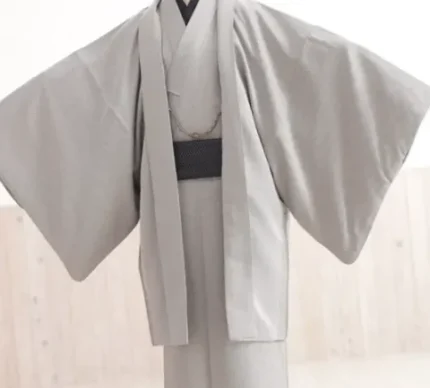
3. yukata
The yukata is one of the most familiar Japanese kimonos for the modern Japanese. As a staple of summer events, it is popular among men and women of all ages.
Wearing a yukata to a fireworks display or when staying at a ryokan has become an established summer tradition. Because it is worn directly over underwear, it has also been used as a housecoat for a long time.
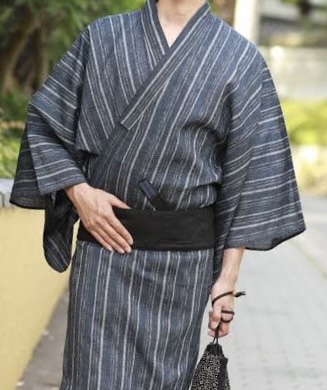
However, it is only a casual attire and should not be worn on formal occasions. Patterns differ for men and women, with men's patterns being relatively simple.
Items to match Kimono
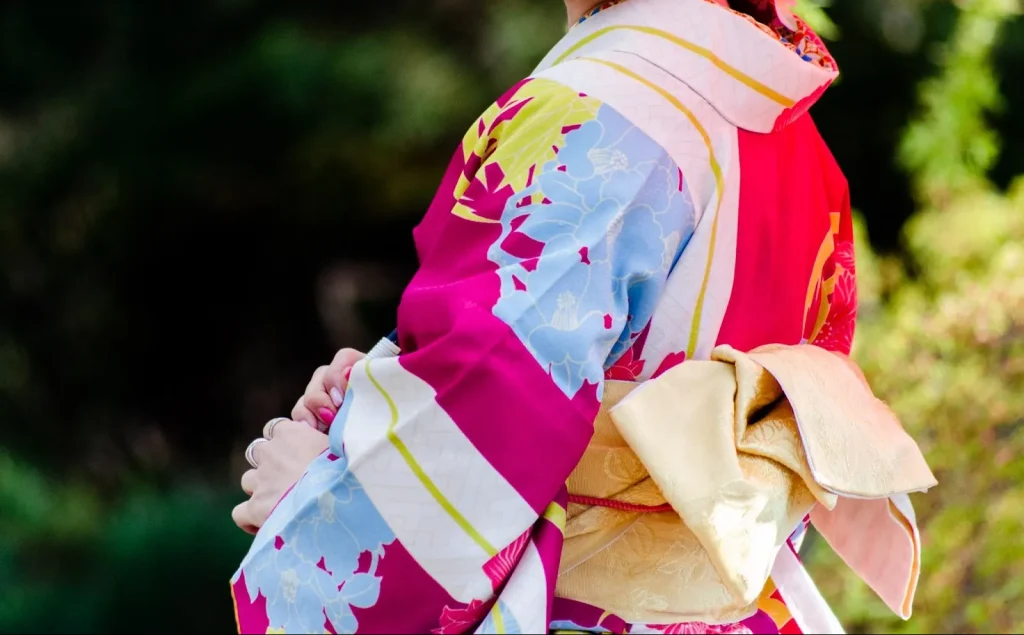
Next, we will introduce accessories to be worn with the kimono. Choosing accessories to match your kimono is one of the pleasures of coordinating your outfit.
1. obi
The obi is an essential part of the kimono, a sash that is wrapped around the torso. Women's obis are usually tied at the waist, while men's obis are usually tied a little below the hip bone.
Obi are available in a variety of colors, patterns, and materials, and choosing the right one to match your kimono is part of the fun. Depending on the arrangement of the obi-dome (obi clasp) that holds the obi in place, an infinite number of coordination possibilities are possible.
Women's obis are often wider, and obis for furisode (long-sleeved kimono) are especially luxurious and gorgeous. Men's obis, on the other hand, are slightly narrower than those for women, and often have chic colors and patterns.

2. ornamental hairpin
Kanzashi is an essential hair accessory for women's kimono hairstyles. Kanzashi can be used by itself, but it is more common to use a combination of several kanzashi.
There are a wide variety of designs, from simple ones to those with ornaments. Just by changing the color, pattern, or type of ornamentation of a kanzashi, the impression of a kimono outfit can be completely changed.
The choice of a hairpin is another important aspect of kimono coordination. For formal kimonos such as tomesode and furisode, it is recommended to choose a gorgeous hairpin as well.
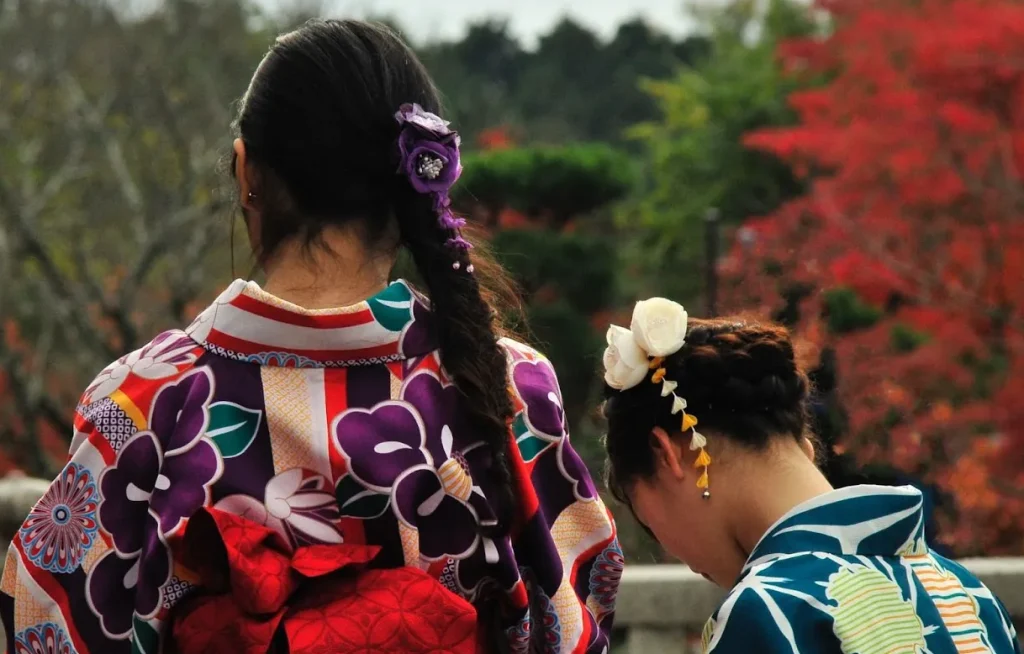
3. zori (Japanese sandals)/ geta (Japanese clogs)/ tabi (split-toed socks)
Zori are Japanese sandals worn with kimono. They are characterized by a strap called a hanao, which is placed between the thumb and forefinger of the foot. Tabi are socks in the shape of tabi that are worn when wearing zori.
Tabi Shoes are made to fit the shape of the foot, so a perfect fit is ideal. They create beautiful feet without wrinkles or sagging.
Geta, on the other hand, are wooden sandals that are slightly taller than zori. They can be worn with or without tabi (split-toed socks) and go great with yukata. Walking down the street in geta, you will hear the pleasant clang-clang sound of the geta.
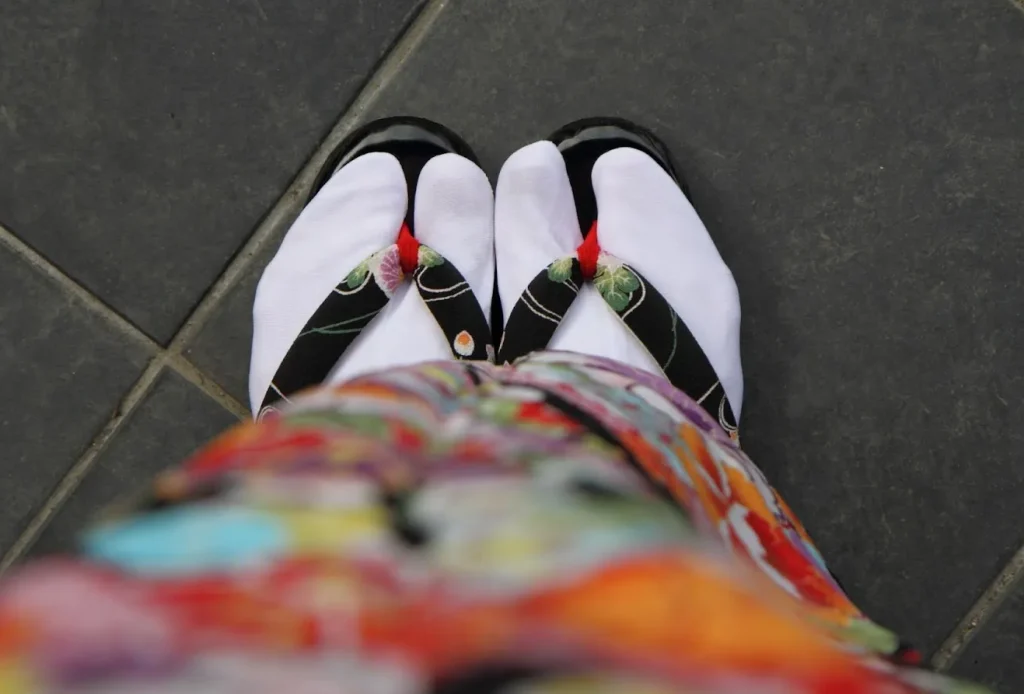
4. wagasa
Lastly, I would like to introduce the Japanese umbrella. This is a traditional Japanese umbrella with a frame made of bamboo or wood and covered with Japanese paper.
It is best to avoid using a Western-style umbrella when wearing a kimono, as it does not match the kimono. A kimono style is ruined just by putting a Western-style umbrella over it.
In this respect, a Japanese umbrella is perfect for wearing with a kimono. There are many patterns and colors to choose from, so it is fun to match it with your kimono. Some stores offer rental services, so why not rent a Japanese umbrella as a set when you rent a kimono?
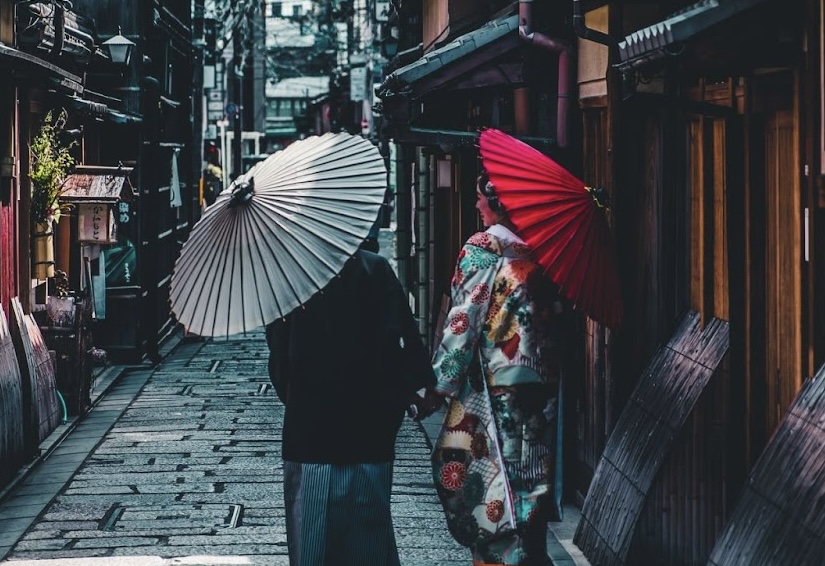
Situations to wear Kimono
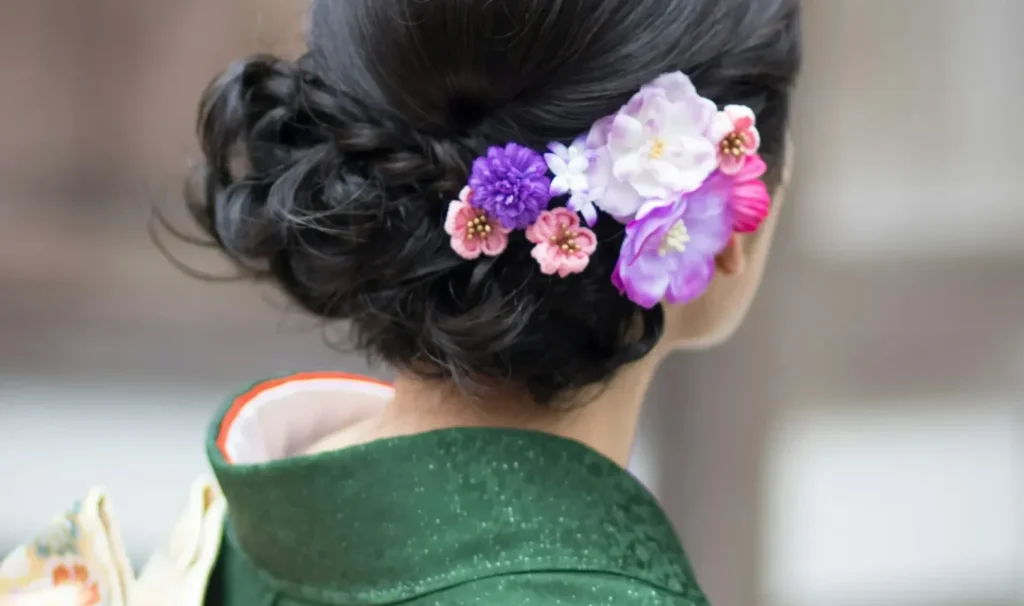
Next, we will discuss the main occasions in which kimonos are worn.
1. ceremonial occasions
Kikugetsushiki is the general term for the four major ceremonies of life: coming-of-age ceremony, wedding ceremony, funeral ceremony, and Buddhist memorial service. All are important events that mark milestones in life and require formal attire.
At weddings and funerals, it is common to wear a formal kimono appropriate for each ceremony. It is important to choose a kimono that matches the TPO: furisode for coming-of-age ceremonies, tomesode or furisode for weddings, and kurotomesode for funerals and legal ceremonies.
However, it is a fact that more and more people are attending weddings and funerals in dresses or western-style clothing these days. Nevertheless, it is most desirable to attend in the traditional attire of kimono.

2. seat of traditional culture
There are many opportunities to wear a kimono when experiencing traditional Japanese culture such as tea ceremony, flower arrangement, and calligraphy. It is common practice for all students as well as masters to wear kimonos to practice, and it is considered good manners to choose a kimono that matches the style of each school.
For first-timers and children, there is no problem if they participate in the class wearing clothes instead of kimono. However, for a recital or other special occasion, it is preferable for students to wear kimonos to match their teachers.
Professional Go players often wear kimonos to games of Go and Shogi. Many amateur players also wear kimonos in official tournaments. Wearing a kimono is a great way to experience traditional Japanese culture.
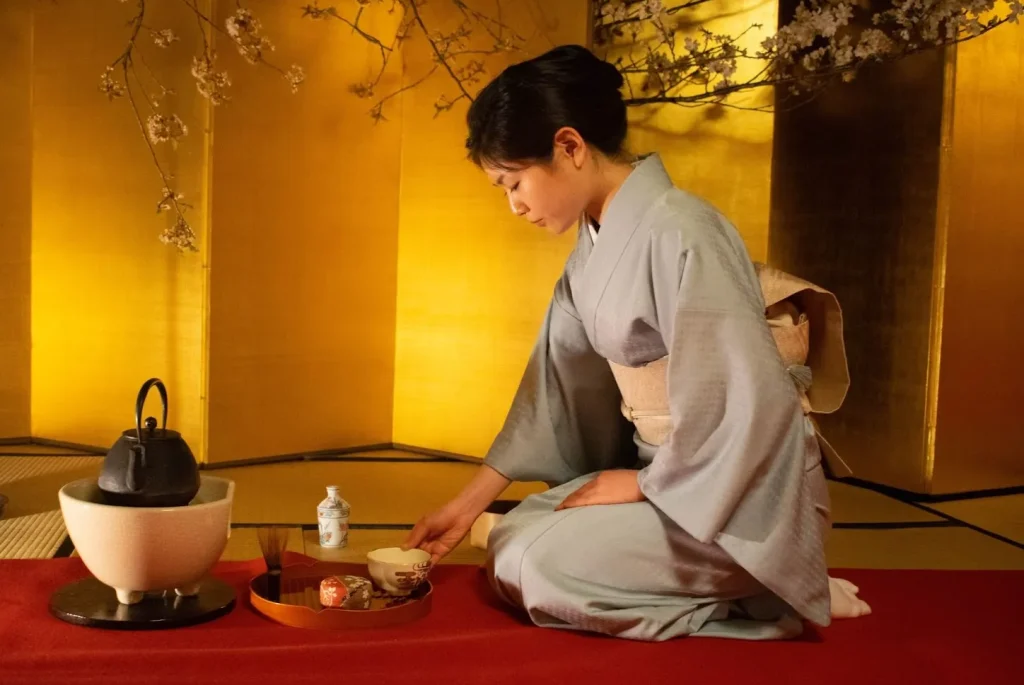
3. for the pleasure of traveling in the ancient city
Kyoto, Nara, and Kamakura are the most famous ancient capitals in Japan. The number of tourists visiting these ancient capitals for their beautiful seasonal scenery is increasing year by year.
One of the pleasures of sightseeing in such an ancient city is to fully enjoy walking around town in a kimono. Strolling through the atmospheric streets in kimono, you will feel as if you have stepped back in time.
Kimono sightseeing is especially popular in Kyoto, where there are many kimono rental stores. During the tourist season, you will see many tourists dressed in kimono here and there in the city. It would be wonderful for couples to rent different colored kimonos and enjoy walking around the city.
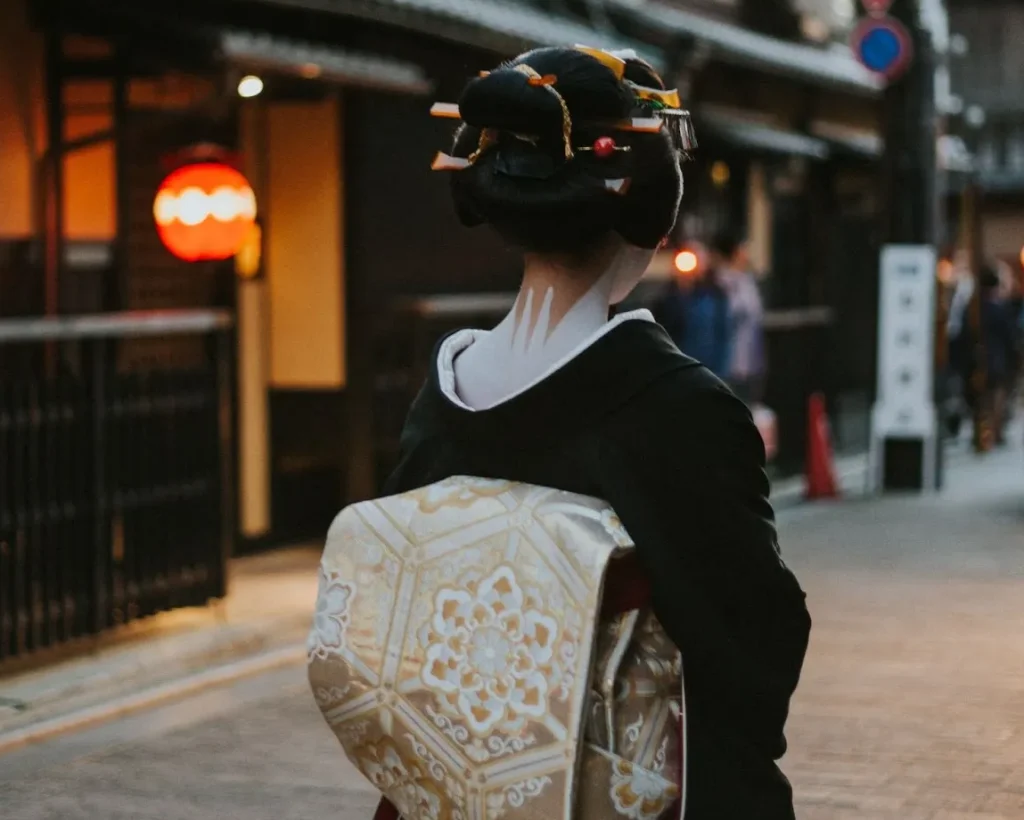
We also recommend plans that include hair and makeup to match the kimono, such as the Maiko experience. With a professional kimono dressing and hair set, you can transform yourself into a beautiful person as if you were someone else. If you are interested, please try it out.
How to Experience Kimono in Japan
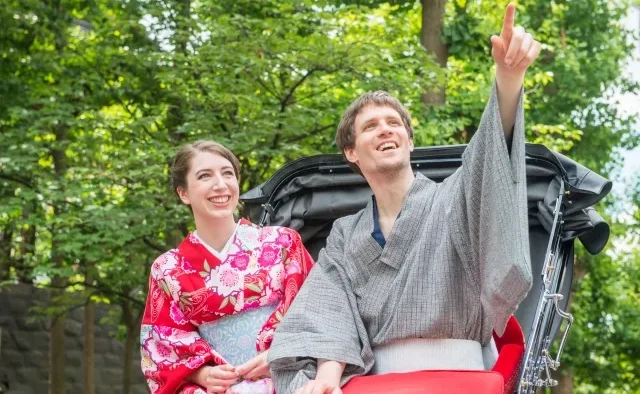
There are many kimono rental stores throughout Japan, including Tokyo and Kyoto, which are popular among foreign tourists. We are happy to offer a wide variety of plans that allow even beginners to experience kimonos in a casual manner.
The basic process of kimono rental is to first select a kimono, obi, and accessories at the store, and then have your hair dressed and set. Even if it is your first time to wear a kimono, you can rest assured that you will be well supported.
Rental prices vary from store to store, but generally range from 3,000 yen to around 10,000 yen. For an additional fee, optional services such as hair sets, accessory rentals, and commemorative photos are available.
Rental kimonos can be worn from a few hours to a full day, making it the perfect place to relax and enjoy sightseeing in kimono. Visit historic shrines and temples, stroll through gardens, and enjoy delicious Japanese food. Wearing a kimono will make your trip even more special.
The number of foreigners who want to wear kimono is increasing every year, so why not try it during your stay in Japan? It will surely be a good opportunity for you to feel the depth of Japanese culture.
For kimono rentals, "wargo" is recommended!
For kimono rentals, we recommend 展開する "wargo" with 11 stores nationwide. We offer kimono rental services for both sightseeing and wedding/funeral occasions, and are easy for foreigners to use.
For those who would like to try on a kimono when visiting Japan for sightseeing, all seven stores are located in major tourist destinations such as Tokyo, Kyoto, and Kanazawa, and offer affordable prices. Rental prices start at 3,000 yen (3,300 yen including tax), which is not only reasonable but also includes a wide variety of designs.
It is also recommended for foreign residents in Japan who are looking for kimonos for weddings, Shichigosan, and other ceremonial occasions. All four stores offer a wide variety of kimonos, including visiting kimonos, furisode, and tomesode. Rental prices are also reasonable, starting at 10,000 yen (11,000 yen including tax). It is possible to visit the store only for a preliminary inspection, so please take advantage of this service before your important event.
If you are a foreigner who would like to try an authentic kimono experience during your stay in Japan, why not try the kimono rental service of "wargo"? You will be able to feel the depth of Japanese culture more closely.
For more information: ▶︎ 14 stores nationwide! The largest and cheapest kimono rental in Japan 【 Kimono rental wargo】
Serious employment support to help you realize your dream of working in Japan!

Do you want to work in Japan?
Let us "Goandup" make that dream a reality!
【 Program Features 】
✅ JLPT N3 level Japanese language acquisition
✅ Thorough preparation for the specific skills test
✅ Full support for job hunting in Japan
Business-focused one-on-one lessons will help you find a job in Japan in the shortest possible time.
【 Program Menu 】
- Individual Japanese language lessons
- Intensive curriculum to obtain N3, especially specialized lessons for business Japanese that can be used at work.
- Intensive curriculum to obtain N3, especially specialized lessons for business Japanese that can be used at work.
- Preparation for the Specific Skills Test
- Customized materials for specific skill tests will be used to focus on frequently asked questions and learning to pass the test.
- Customized materials for specific skill tests will be used to focus on frequently asked questions and learning to pass the test.
- Resume and CV support
- To create resumes and CVs tailored to Japanese corporate culture, and to brush up on self-promotion and motivation for application.
- To create resumes and CVs tailored to Japanese corporate culture, and to brush up on self-promotion and motivation for application.
- Interview Preparation
- Guidance on areas for improvement through mock interviews and feedback based on corporate interview scenarios. Learn interview etiquette and behavior unique to Japan.
- Guidance on areas for improvement through mock interviews and feedback based on corporate interview scenarios. Learn interview etiquette and behavior unique to Japan.
- career consulting
- Provide introductions to companies that match the participant's career goals, select companies to apply to, and provide advice on the level of knowledge required by the companies to which the participant is applying.
- Provide introductions to companies that match the participant's career goals, select companies to apply to, and provide advice on the level of knowledge required by the companies to which the participant is applying.
- Chat Support
- In addition to one-on-one individual lessons, we also accept casual questions via DM (visa application, living support, assistance in finding a room, etc.).
If you are serious about your career in Japan, join us now!
▶︎ for more informationclick here.
We will do our best to support your success in Japan!
summary
What did you think? We have introduced in detail Japan's proud kimono culture, from the typical types to how to wear and experience it.
Today, kimonos are becoming very popular not only in Japan but also overseas, and there are more and more opportunities to wear kimonos in tea ceremony and flower arrangement classes overseas.
The kimono is a traditional costume that embodies Japanese history and culture. Since there are more and more opportunities to casually try on a kimono for sightseeing and other occasions, we recommend that you try it on at least once.
When you travel to Japan, why not take advantage of our kimono rentals for a special and unforgettable experience?
Your support will help us!
Thank you for visiting Goandup Picks. Our mission is to provide you with more useful information to show the world what Japan has to offer.
Your support will help us to further enhance our activities, so please support us!


